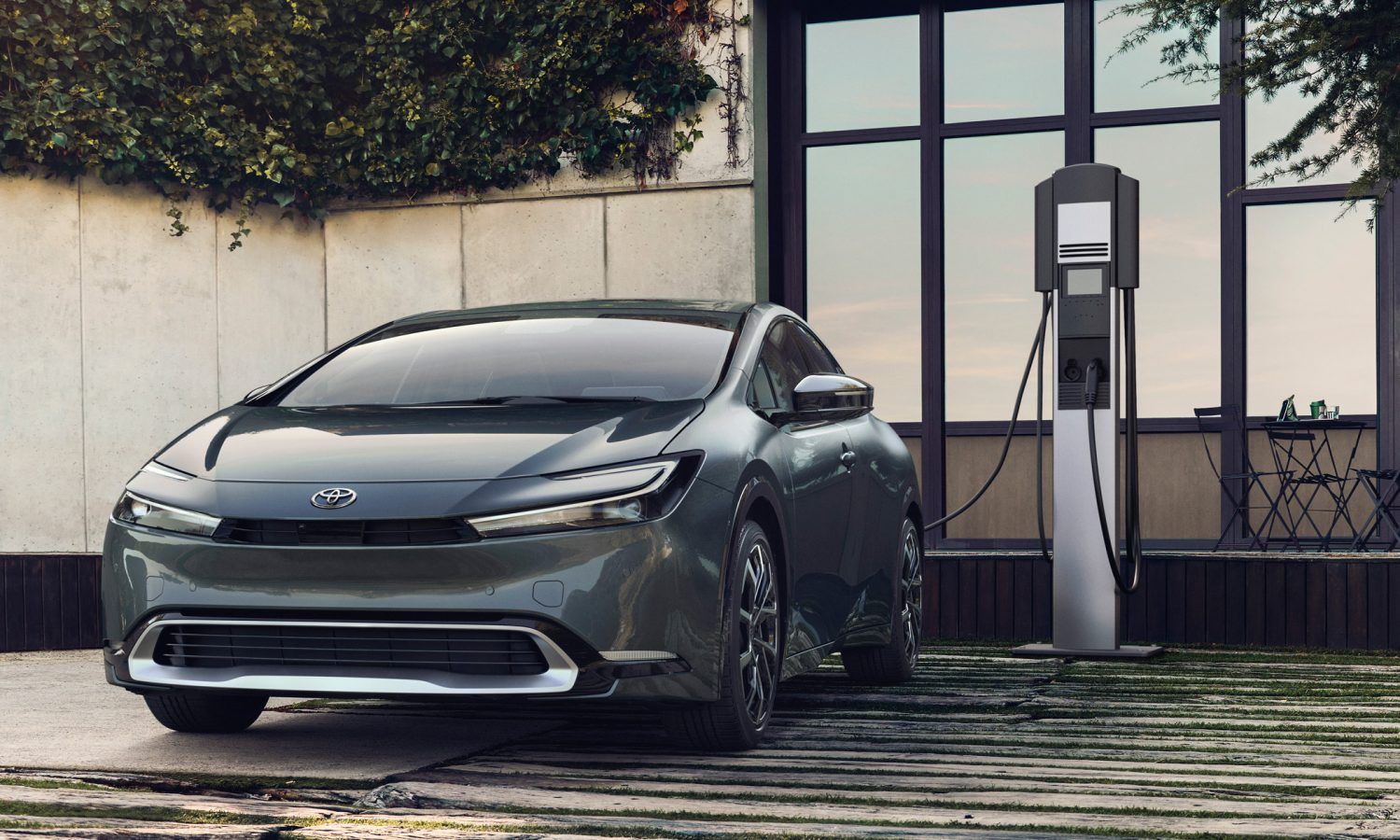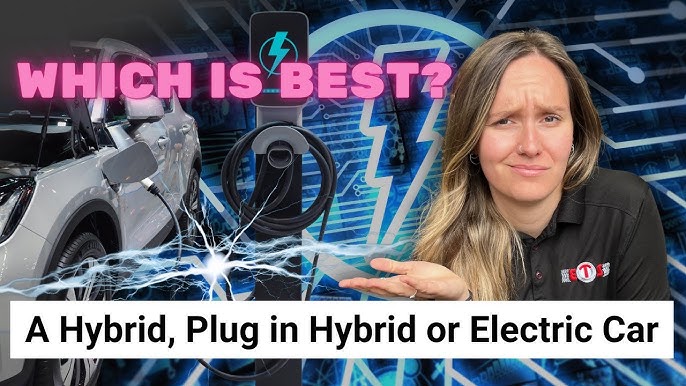Are you confused about the difference between an electric car and a plug-in hybrid? You’re not alone.
Choosing the right vehicle can feel overwhelming with so many options and technical terms. But understanding how these cars work can save you money, reduce your carbon footprint, and make your daily drive easier. You’ll discover the key differences that matter most to you—how they run, how far they go, and what it means for your wallet and the environment.
Keep reading to find out which type of car fits your lifestyle perfectly.

Credit: autos.yahoo.com
Electric Car Basics
Electric cars are changing how we drive. They run on electricity, not gas. This makes them cleaner and quieter. Understanding their basics helps you see why they matter.
These cars rely on new technology that stores and uses electric power. Knowing how they work helps you compare them to other cars, like plug-in hybrids.
How Electric Cars Work
Electric cars use an electric motor to move. This motor gets power from a big battery inside the car. There is no gasoline engine. When you press the pedal, the motor pushes the car forward. This system is simple and efficient.
Battery And Charging
The battery is the car’s energy source. It stores electricity to power the motor. You charge the battery by plugging the car into a charger. Charging can take from 30 minutes to several hours. It depends on the charger type and battery size.
Driving Range And Performance
Range means how far the car can go on one charge. Most electric cars can travel over 100 miles easily. Some go beyond 300 miles. Electric cars also deliver smooth and fast acceleration. They respond quickly to your commands.
Plug-in Hybrid Essentials
Plug-in hybrids combine electric and gasoline power. They offer a mix of benefits from both types of vehicles. These cars use a battery and a fuel engine. This design helps them drive on electricity or gas. It suits drivers who want to save fuel but need longer range.
Understanding how plug-in hybrids work helps you decide if they fit your needs. Below are key features that explain their unique setup.
Dual Power Sources
Plug-in hybrids have two power sources. One is an electric motor powered by a battery. The other is a gasoline engine. The car can switch between these or use both. This lets you drive on electric power alone for short trips. For longer trips, the gasoline engine takes over.
Battery And Fuel Usage
The battery stores electricity for short drives. It can power the car without burning fuel. The gasoline engine kicks in when the battery runs low. It also charges the battery while driving. This system reduces fuel use and emissions.
Charging And Refueling
You charge the battery by plugging it into an outlet. Charging takes a few hours depending on the charger. When the battery is empty, you fill the tank with gasoline. This flexibility allows long drives without worrying about charging stations.
Comparing Powertrains
Understanding the powertrains in electric cars and plug-in hybrids helps you see their main differences. Powertrains are the systems that make the car move. They include the engine, motor, and batteries.
Each type uses a different setup to power the wheels. This affects how the car drives and how much energy it uses.
Electric Motor Vs. Hybrid Setup
Electric cars have only one power source: an electric motor. It runs on a large battery pack. The motor turns the wheels directly. This setup is simple and quiet.
Plug-in hybrids combine an electric motor with a gasoline engine. The car can run on the electric motor alone or use the engine for longer trips. This gives more flexibility but adds complexity.
Energy Efficiency Differences
Electric cars use energy more efficiently. They convert most battery power to move the car. There is no fuel engine wasting energy as heat.
Plug-in hybrids use less electricity but still burn gasoline. This lowers overall efficiency. The gasoline engine needs fuel and creates emissions.
Electric cars save more energy and produce zero tailpipe emissions. Plug-in hybrids offer a balance between electric driving and fuel range.

Credit: www.caranddriver.com
Environmental Impact
The environmental impact of electric cars and plug-in hybrids is a key factor for many buyers. Both types aim to reduce harm to the planet. Yet, they differ in how they affect the environment. Understanding these differences helps in making better choices for cleaner travel.
Emissions And Pollution
Electric cars produce no tailpipe emissions. They run only on electricity stored in batteries. This means zero pollution while driving. Plug-in hybrids use both electricity and gasoline. They produce fewer emissions than regular cars. But they still release some pollution when using gas. Electric cars have an edge in reducing air pollution.
Energy Consumption Patterns
Electric cars rely solely on electricity from the grid. Their energy use depends on the power source. Cleaner electricity means lower overall emissions. Plug-in hybrids use electricity for short trips. For longer drives, they switch to gasoline. This mixed use can increase total energy consumption. Electric cars offer more consistent energy efficiency.
Cost Considerations
Cost plays a big role when choosing between an electric car and a plug-in hybrid. Both have different price points and ongoing expenses. Understanding these costs helps make a smart choice.
Purchase Price And Incentives
Electric cars usually cost more than plug-in hybrids at the start. Their batteries are bigger and more expensive. Plug-in hybrids have smaller batteries and a gas engine, so they cost less upfront.
Governments offer incentives to lower the price. Electric cars often get bigger tax credits and rebates. Plug-in hybrids also qualify but the benefits might be smaller. These incentives reduce the initial cost a lot.
Maintenance And Operating Costs
Electric cars have fewer moving parts. This means less chance of something breaking. They do not need oil changes or exhaust system repairs.
Plug-in hybrids need regular maintenance like gas cars. Oil changes and engine checkups are required. This adds to the cost over time.
Charging electric cars costs less than buying fuel. Electricity prices are lower than gas in many places. Plug-in hybrids use both electricity and gas, so fuel costs can be higher.
Driving Experience
The driving experience differs significantly between electric cars and plug-in hybrids. Both offer unique benefits depending on your daily needs and preferences. Understanding these differences helps you choose the right vehicle for smooth and enjoyable drives.
Performance And Handling
Electric cars deliver instant torque, making acceleration quick and smooth. They often feel quieter and more responsive than traditional cars. The battery weight is low and centered, improving stability and handling on curves. Plug-in hybrids combine an electric motor and gasoline engine. This setup provides flexibility but can add weight, affecting sharpness in handling. Acceleration is good but may not be as seamless as fully electric cars. Both types offer a quiet ride, but electric cars tend to be quieter overall.
Charging Convenience
Electric cars rely solely on electric charging. They need access to charging stations or home chargers for daily use. Charging times vary depending on the charger type and battery size. Plug-in hybrids offer more convenience with dual fueling options. You can charge the battery or fill the gas tank. This allows longer trips without worrying about finding a charger. Plug-in hybrids reduce range anxiety and allow easy refueling at gas stations. Both vehicles benefit from home charging setups, but plug-in hybrids provide more flexibility on the road.
Suitability For Different Drivers
Choosing between an electric car and a plug-in hybrid depends on the driver’s needs. Different vehicles suit different types of driving and lifestyles. Understanding these differences helps make a better choice.
Urban Vs. Long-distance Use
Electric cars work best for city driving. Short trips and frequent stops match their battery range. Charging is often available at home or public stations nearby.
Plug-in hybrids fit long-distance travel well. They use electric power for short drives. Gas engines take over for longer trips. This means no worry about running out of charge far from home.
Lifestyle And Driving Habits
Drivers who mostly drive short distances benefit from electric cars. They enjoy low running costs and zero emissions. Those who drive daily commutes or school runs find them ideal.
Plug-in hybrids suit drivers with mixed habits. They switch between electric and gas modes easily. This works well for people with varied daily routes. It also suits those who can’t charge their car often.

Credit: www.wonderfulpcb.com
Frequently Asked Questions
What Defines An Electric Car Versus A Plug-in Hybrid?
An electric car runs solely on electricity stored in batteries. A plug-in hybrid combines an electric motor with a gasoline engine. The hybrid can switch between electric power and fuel for longer range. This makes plug-in hybrids more versatile in driving conditions.
How Do Electric Cars And Plug-in Hybrids Charge?
Electric cars charge only through external electric sources. Plug-in hybrids also charge externally but use gasoline as backup. Charging times vary but plug-in hybrids can rely on fuel if no charger is available. This offers flexibility for different travel needs.
Which Vehicle Type Is More Environmentally Friendly?
Electric cars produce zero tailpipe emissions, making them cleaner. Plug-in hybrids emit some pollution when using gasoline. However, hybrids reduce fuel use by running on electric power for short trips. Overall, electric cars have a lower environmental impact.
What Are The Cost Differences Between These Cars?
Electric cars often cost more upfront due to larger batteries. Plug-in hybrids usually have lower initial costs but may need more maintenance. Charging an electric car is cheaper than fuel costs for hybrids. Long-term savings depend on driving habits and fuel prices.
Conclusion
Electric cars run only on batteries and need charging stations. Plug-in hybrids use both a battery and a gasoline engine. They can switch between electric power and fuel for longer trips. Choosing depends on your driving habits and access to chargers.
Both options help reduce pollution and save fuel. Think about how far you drive daily and your charging options. This helps pick the best vehicle for your needs. Both types offer cleaner ways to travel. The choice is yours.

